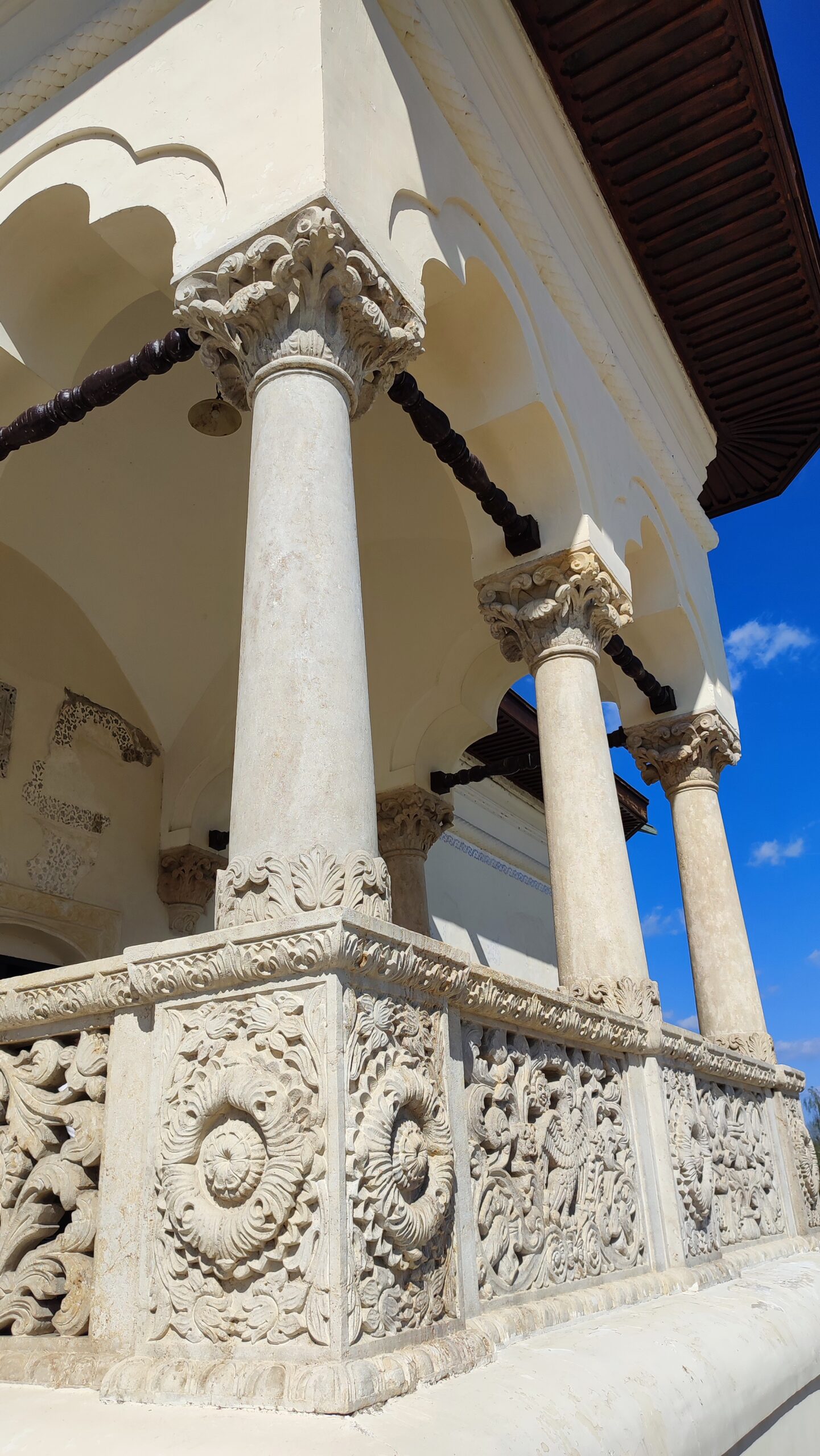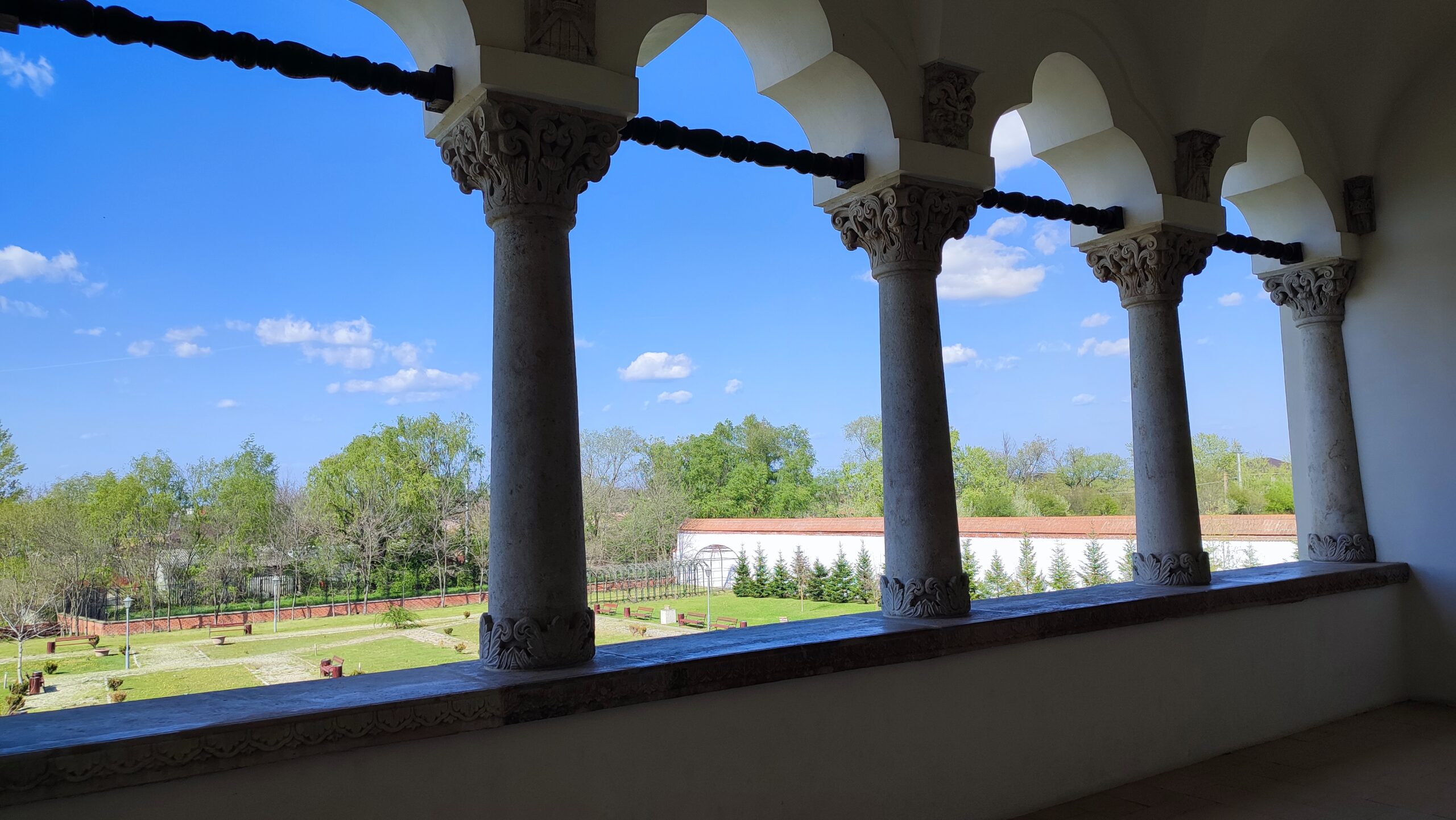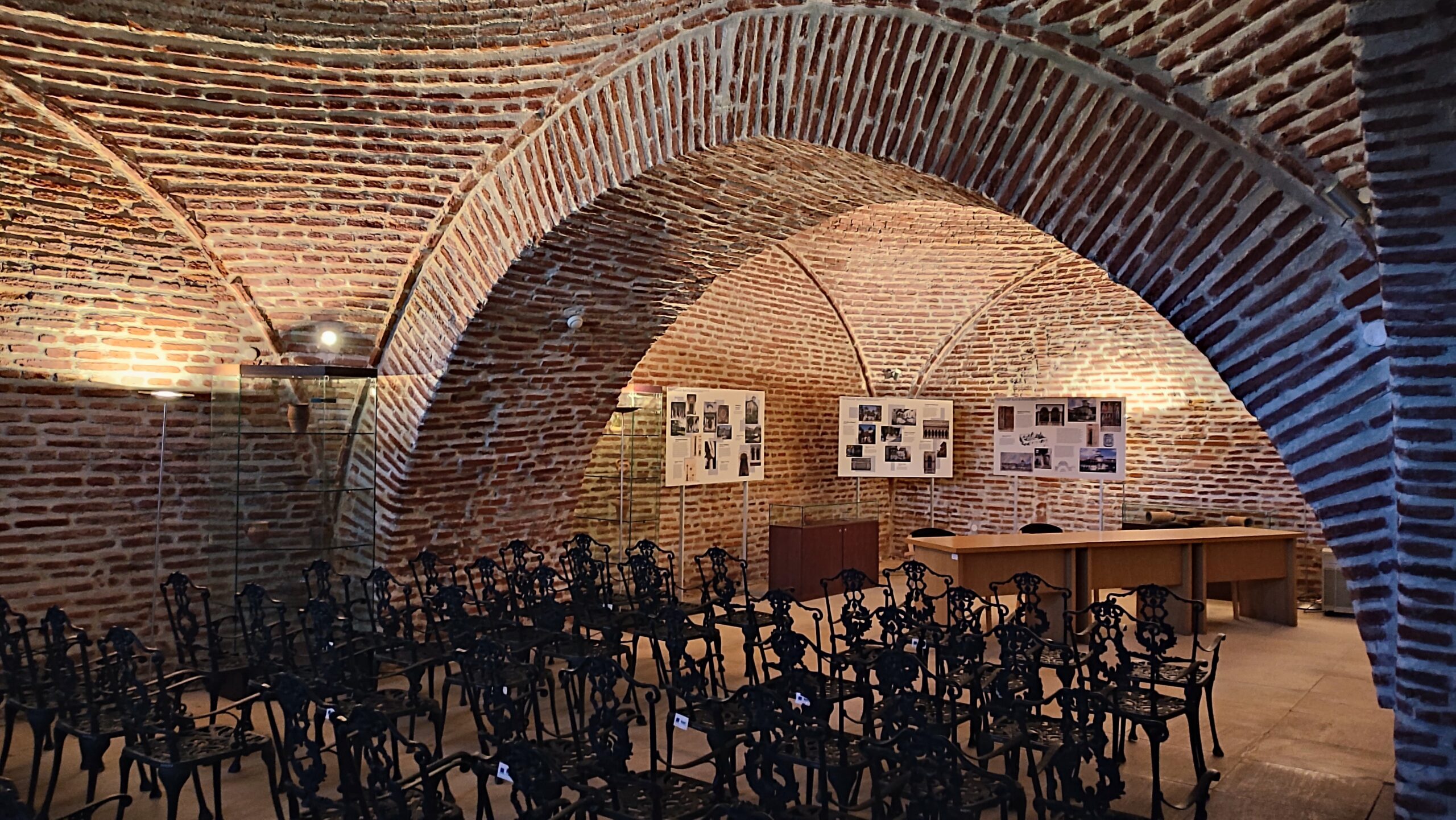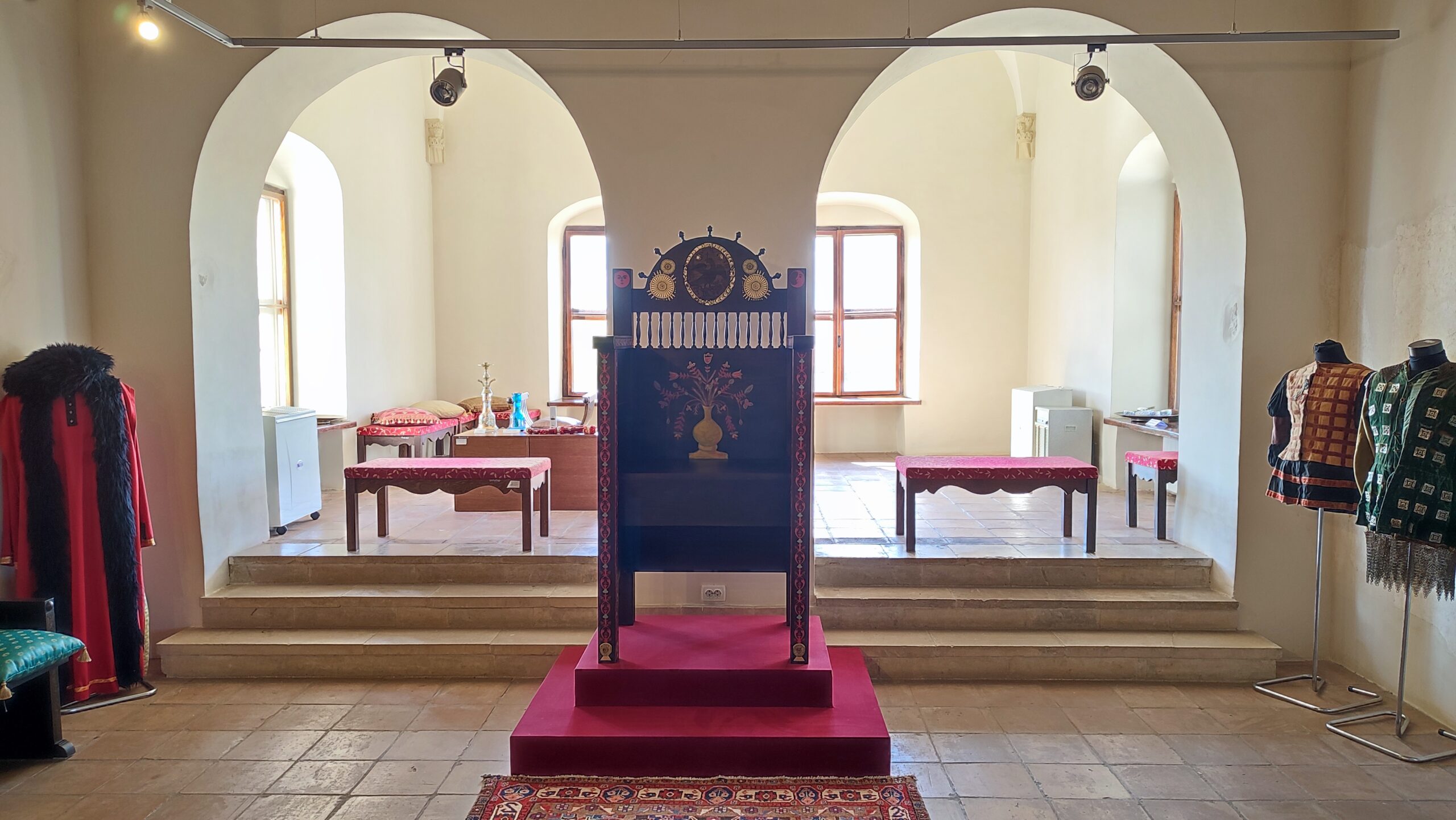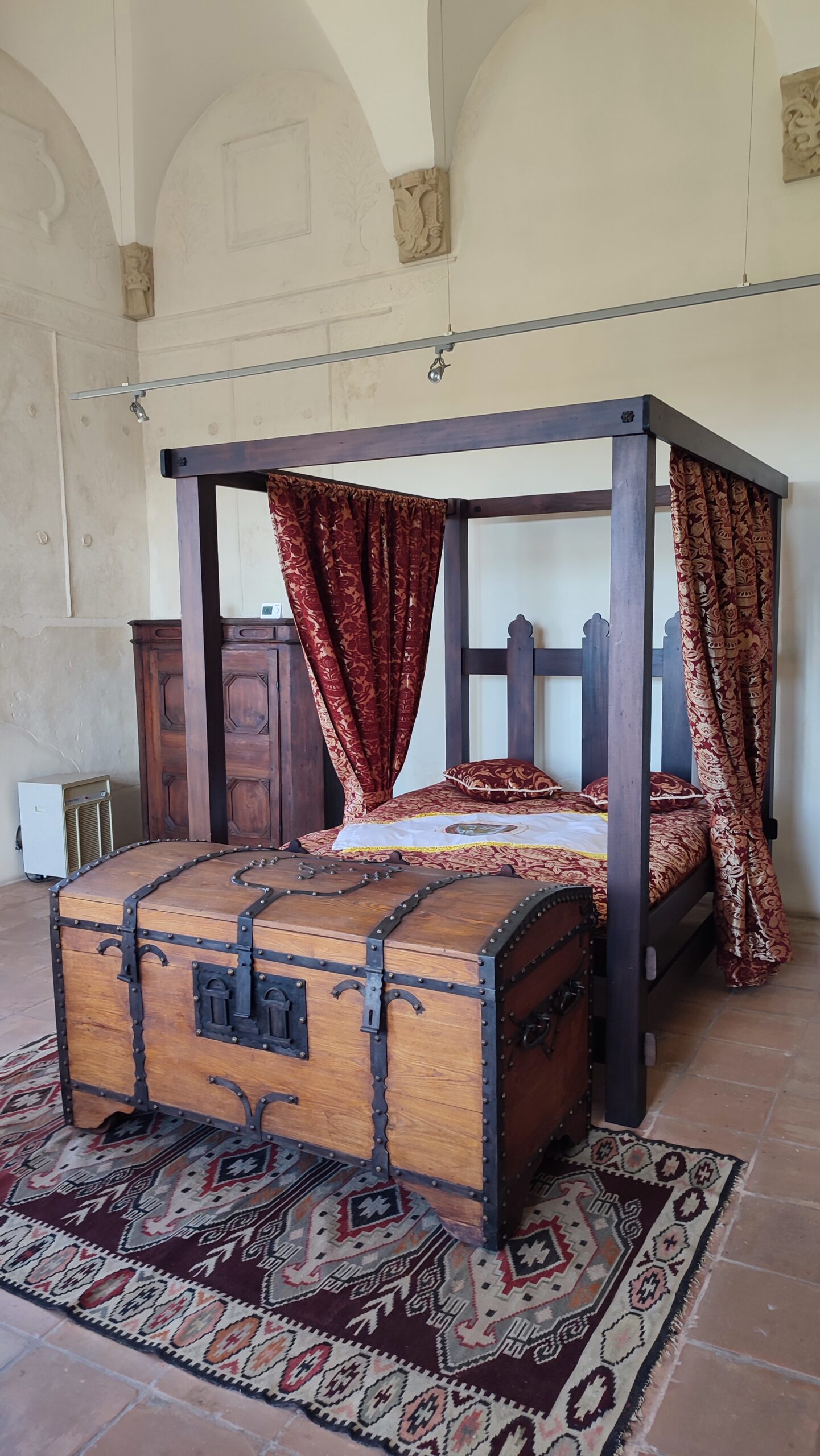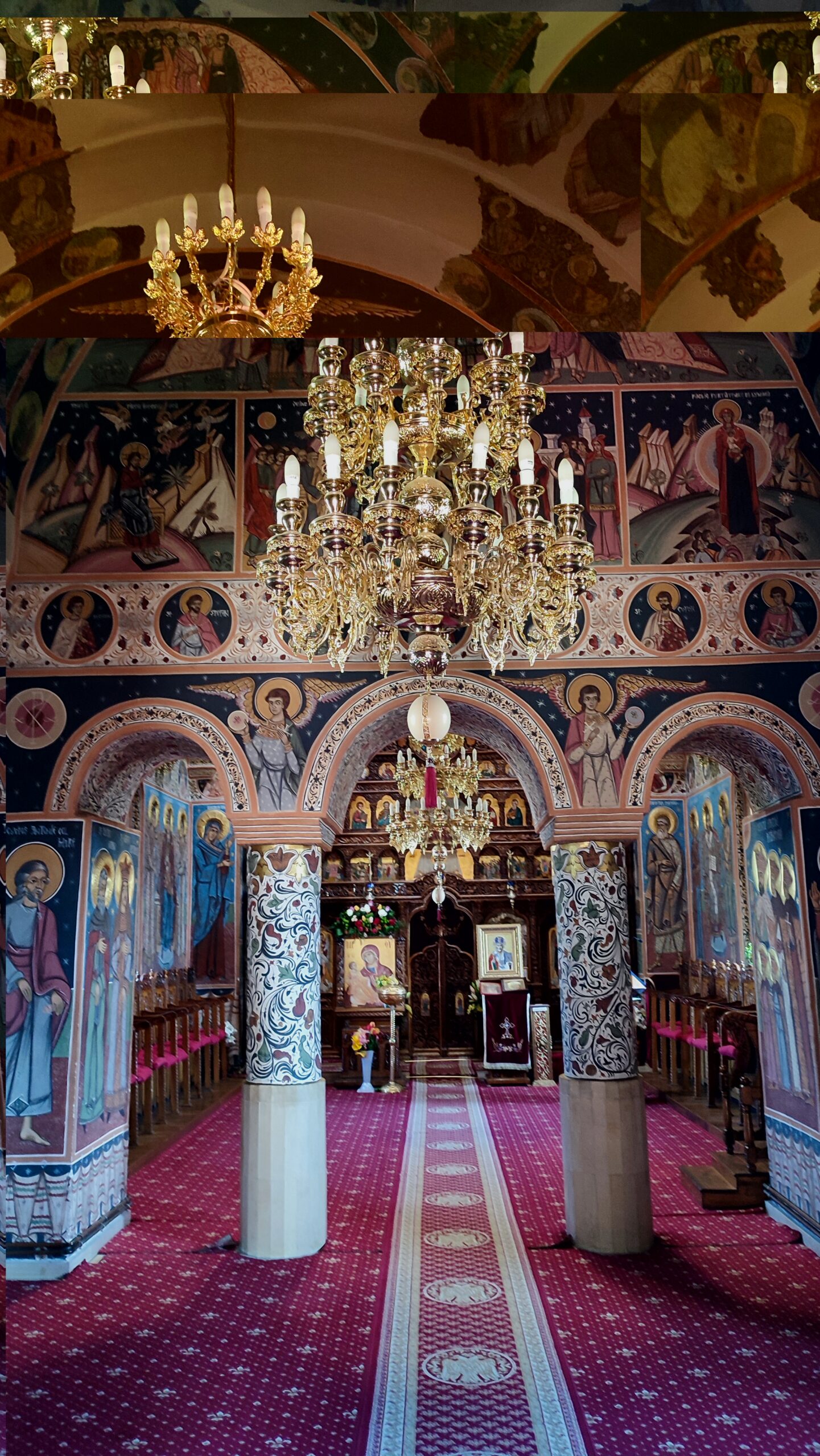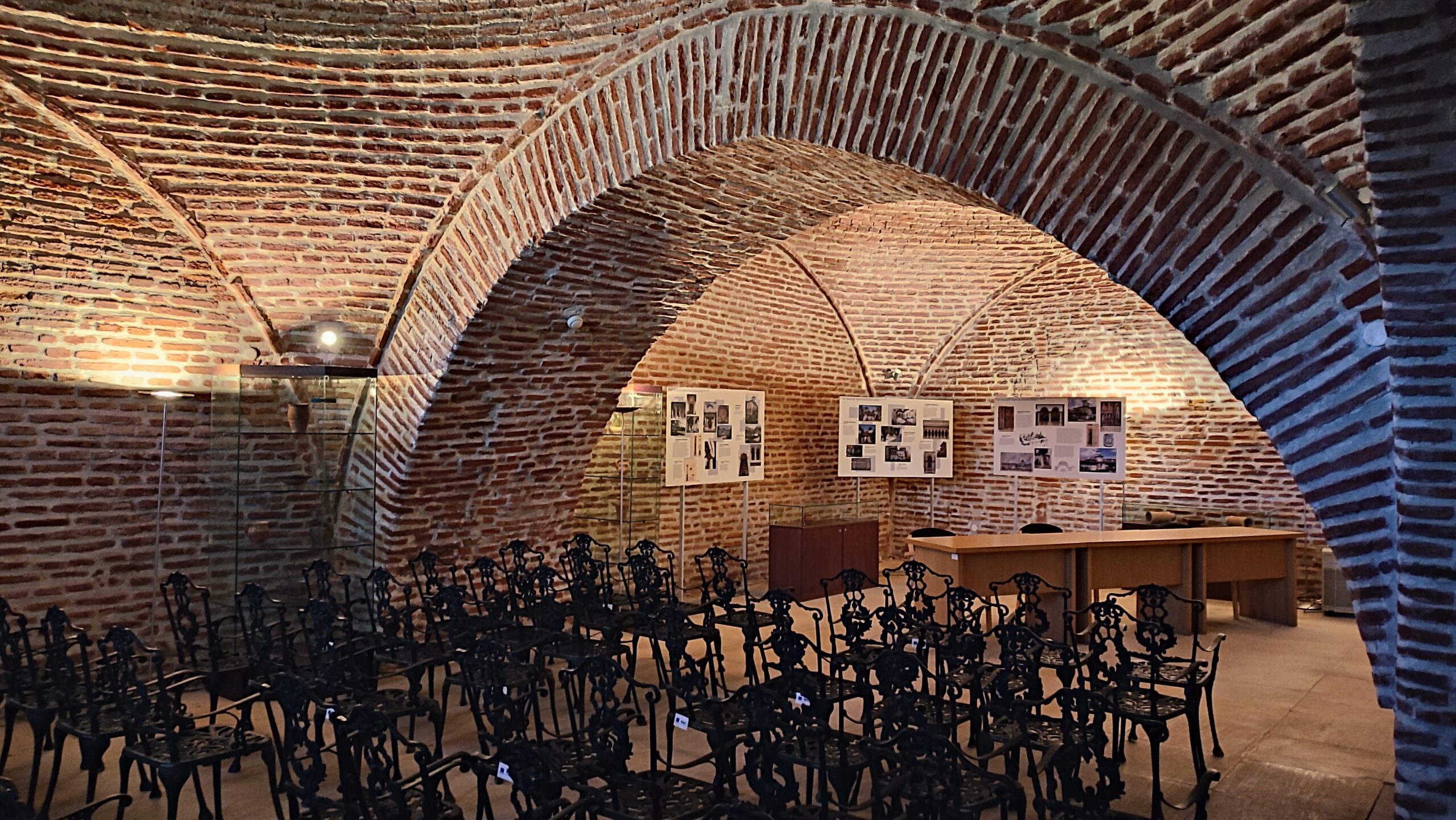Located in Dâmbovița County, approximately 45 km northwest of Bucharest and easily accessible from the Bucharest-Pitești Highway (km 49), the Brâncovenesc Palace Ensemble in Potlogi is a remarkable cultural and historical destination, situated about 16 km from the town of Titu.
Built in 1698 by Prince Constantin Brâncoveanu for his son, the palace is a prime example of the Brâncovenesc style.
This artistic style blends local Romanian traditions with Oriental and Western influences, reflecting a unique synthesis of heritage and innovation.
The ensemble consists of a rectangular courtyard divided into three sections: the reception courtyard, the service courtyard, and the gardens. These are all enclosed by defensive walls and auxiliary buildings. The palace itself has a rectangular shape with an impressive vaulted cellar, a ground floor, and an upper floor with spacious rooms, including the prince’s chambers, the lady’s quarters, a loggia, and a special room for valuables known as the “cellar master’s room.”
Inside, the palace preserves original decorative elements such as floral stucco motifs and monastery-style vaults, while the exterior features fragments of stucco decoration. Within the enclosure are also the ruins of auxiliary buildings such as the kitchen, the stables, and the old house, as well as the church dedicated to Saint Demetrius, founded in 1683 by the same prince.
This ensemble is ideal for history, architecture, and art enthusiasts, offering an immersive experience into the Brâncoveanu era and the life of the Wallachian princely court at the end of the 17th century. Visitors are encouraged to allocate several hours to explore the palace, courtyard, church, and gardens, and to join guided tours that provide rich historical context and detailed insights into the Brâncovenesc style.
The Brâncovenesc Palace Ensemble in Potlogi is a jewel of Romanian cultural heritage and a must-see tourist attraction accessible from Bucharest. It offers an authentic glimpse into the era of Prince Constantin Brâncoveanu, showcasing remarkable architecture and well-preserved history.
The ensemble is a landmark monument of Brâncovenesc architecture. It underwent extensive restoration between 2011 and 2015 through a European-funded project that included rehabilitating the palace, reconstructing some courtyard buildings, and improving infrastructure such as parking and a pedestrian bridge over the Tudorel stream. The restoration enabled the museum’s reopening to the public in November 2015, featuring authentic furniture and a faithful presentation of the Brâncoveanu era.
Near the palace entrance stands a bust of Prince Constantin Brâncoveanu, created by sculptor Olimpiu Petre and unveiled in 2004.
Monday-Tuesday – Closed
Wednesday-Sunday – 9 AM- 5 PM
-
Full ticket: 20 RON
-
Reduced ticket: 10 RON
-
Free entry for preschool children, institutionalized children, persons with disabilities, Euro 26 cardholders (on the 26th of each month), organized groups, and other special categories.
Guided tours are available for an additional fee. For groups larger than 10 people, guided tours are free upon request.
Situated in Dambovita, Brancoveanu's Palace is situated in the same county as the Royal Court of Târgoviște.


